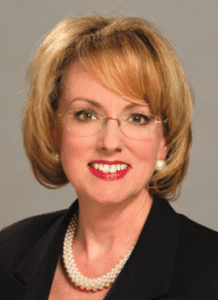Insights, instincts, and a few gut feelings.


The pandemic has quickly changed our world, our profession, and our vision for the future. While we were celebrating holidays in December 2019, the first reports of a new coronavirus disease were being reported out of Wuhan, China. Coronavirus disease 2019 (COVID-19) has since spread rapidly across China, Asia, the Middle East, Europe, North America, and other parts of the world. Declared a public health emergency of international concern on January 30, 2020, by the World Health Organization, it’s now a pandemic.
Our society and our psyche have become obsessed with daily news reports about the disease, quarantine orders, and the alarming death rates in certain populations such as nursing home residents and Americans of color. The good news is that nurses are being highlighted everyday by the media as “healthcare heroes.” My gut instinct and a few early studies are highlighting what else is happening to the nursing profession at this time. These are subtler effects that I fear may be going unnoticed amid a crowded news cycle. These three issues concern me most:
- An unpredicted nursing shortage happening now—I’m very worried about this one. Nurse staffing is taking a hit. Veteran nurses are leaving, opting for departure because they’re members of a COVID-19 “vulnerable population.” Younger nurses, fearful of taking COVID-19 home to children or being pregnant while working, are considering career changes. The large number of nurses being furloughed or laid off is a real concern because nursing was once considered a recession-proof profession. Not anymore. No matter their age, some nurses are leaving as a way to manage their own stress, health, and well-being. Unfortunately, this will likely continue because society hasn’t invested in mental health care to ease psychological distress.
- Shifting nursing workforce needs—Practicing nurses need more education and training on pandemics and heightened infection prevention. The pandemic has spotlighted the need for more public health nurses who are competent in infection prevention and surveillance, and I suspect focus and funding for more school nurses will increase as schools grapple with reopening plans. According to the National Association of School Nurses, of the students in the 130,000 U.S. public schools, 25% have zero access to a school nurse.
- Rapid changes to nursing education programs—Moving from in-classroom instruction to 100% online teaching was accomplished in record time. However, clinical rotation sites gave way to clinical simulation as a substitute, and I’m concerned about the permanent loss of critical clinical time. Are virtual classes the new norm? What percentage of simulation for clinical experience is acceptable? Quick curriculum changes to incorporate more focus on disaster preparedness and personal protective equipment use occurred overnight, but rethinking how we engage with patients and families is taking longer.
“It was the best of times, it was the worst of times, it was the age of wisdom.” These words are the famous opening paragraph of Charles Dickens’ novel, A Tale of Two Cities. The same can be said for how the COVID-19 pandemic is changing our profession. I commend the American Nurses Association for keeping nursing and important issues front and center in the public eye. And I commend all nurses, in all practice settings, for their quick response to whatever the pandemic threw their way. A key role of nurses is to advocate for patient safety, and despite these stressful and complicated times, we will always focus on the best interests of our patients and families. That’s not intuition, it’s a fact.


Lillee Gelinas, MSN, RN, CPPS, FAAN, Editor-in-Chief


















